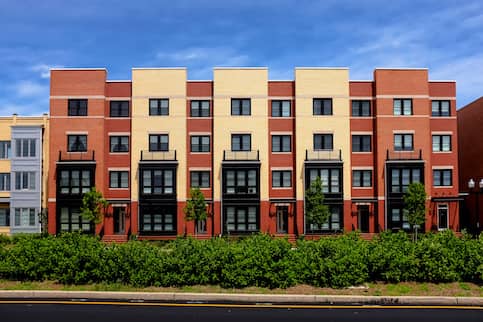Condo HOA and Community Occasions: Building Stronger Links
Condo HOA and Community Occasions: Building Stronger Links
Blog Article
Just How Condominium HOA Controls Shared Spaces and Enhances Community Harmony
The governance of common areas within a condo association plays a pivotal function in fostering neighborhood cohesion and preserving residential property worths. Via the establishment of detailed guidelines, the Condominium HOA not just controls the usage of communal features but likewise advertises a culture of regard and accountability among homeowners.
Role of the HOA
The house owners association (HOA) functions as the controling body for condominium neighborhoods, playing an essential duty in maintaining the residential property and promoting a natural living environment. It is accountable for enacting and applying area guidelines and laws, which are designed to protect the visual value and performance of the common room. This governance makes sure that all residents follow a standardized collection of expectations, promoting a feeling of unity amongst diverse property owners.
Additionally, the HOA handles the economic aspects of the neighborhood, consisting of budgeting, gathering dues, and preserving typical locations. This monetary oversight is essential in making certain that essential upkeep and renovations are brought out promptly, enhancing residential property worths over time. The HOA also serves as an intermediary between residents and outside entities, such as city government and provider, dealing with common issues effectively.
Moreover, the HOA often arranges area occasions and programs, motivating neighborly interactions and constructing partnerships among locals. By facilitating open interaction and attending to grievances, the HOA contributes to an unified living atmosphere. Thus, its multifaceted duty is vital in ensuring the smooth operation and overall satisfaction within condo neighborhoods.
Guidelines for Shared Rooms
Efficient governance in condo communities demands clear policies for shared rooms, which are important for maintaining order and advertising a sense of community amongst citizens. These policies act as standards that guarantee everyone can appreciate usual locations, such as swimming pools, yards, and leisure facilities, without conflict.

Furthermore, sanitation and maintenance criteria are vital, often stating that residents need to tidy up after themselves and report any type of problems to the house owners' organization. By clearly connecting these expectations, the HOA can encourage and lessen misconceptions respect among homeowners.
Ultimately, well-defined policies for common spaces contribute to the general lifestyle in a condominium neighborhood, enabling homeowners to coexist quietly while enjoying the services that enhance their living experience. condo hoa.
Significance of Neighborhood Standards

Neighborhood guidelines play a considerable function in promoting a cohesive and respectful atmosphere within condominium associations. These guidelines establish clear expectations for residents, advertising a feeling of liability and shared duty. By defining acceptable behaviors and practices, community standards aid protect against misunderstandings and problems amongst homeowners.
In addition, these standards serve as a framework for maintaining the useful and visual stability of common areas. They make sure find out that all homeowners abide by criteria regarding residential property maintenance, noise levels, and usage of communal centers. This harmony not only enhances the aesthetic charm of the neighborhood but additionally contributes to overall residential or commercial property values, benefiting all home owners.

Dispute Resolution Strategies
Navigating disputes within a condominium organization needs a structured strategy to ensure effective and fair resolution. Efficient conflict resolution approaches usually start with open communication, urging locals to voice concerns in a considerate way. Developing an assigned channel for complaints, such as an idea box or an online discussion forum, can facilitate this procedure.
Mediation is one more crucial approach, wherein a neutral 3rd party aids disputing homeowners reach an equally agreeable service. This approach cultivates cooperation and understanding, reducing hostility - condo hoa. The HOA board need to likewise create clear procedures for attending to complaints, making sure all events understand the actions involved
Routine problem resolution training for board participants can enhance their ability to deal with conflicts properly. Utilizing a well-defined framework, such as the "Interest-Based Relational Method," assists concentrate conversations on passions instead than placements, advertising a solutions-oriented state of mind.
Advantages of Community Consistency
Promoting community consistency within a condo organization brings many advantages that improve the total living experience for citizens. An unified community motivates cooperation and participation amongst neighbors, resulting in a much more like-minded ambience. When homeowners feel connected and highly regarded, they are more most likely to participate in common activities and take part in decision-making procedures, causing a more powerful sense of belonging.
Moreover, area consistency substantially decreases misconceptions and disputes, which can otherwise interfere with everyday life. A read the full info here serene environment decreases anxiety and promotes psychological wellness, allowing residents to appreciate their homes completely. Additionally, harmonious relationships usually equate into raised property worths, as prospective customers are drawn to areas defined by security and teamwork.

Verdict
Through the facility of clear regulations and community guidelines, homeowners are encouraged to maintain a considerate and answerable atmosphere. Inevitably, the initiatives of the HOA contribute to a cohesive neighborhood, advertising both property values and overall resident fulfillment.
In Addition, the HOA often organizes neighborhood events and programs, motivating neighborly communications and constructing partnerships amongst homeowners. By delineating acceptable behaviors and practices, community guidelines help prevent misunderstandings and conflicts amongst citizens.
In addition, area standards promote reliable interaction amongst homeowners and the Homeowners Organization (HOA) With the establishment of clear policies and neighborhood guidelines, locals are encouraged to maintain a accountable and considerate setting. Eventually, the efforts of the HOA contribute to a natural area, advertising both residential property values and overall resident satisfaction.
Report this page